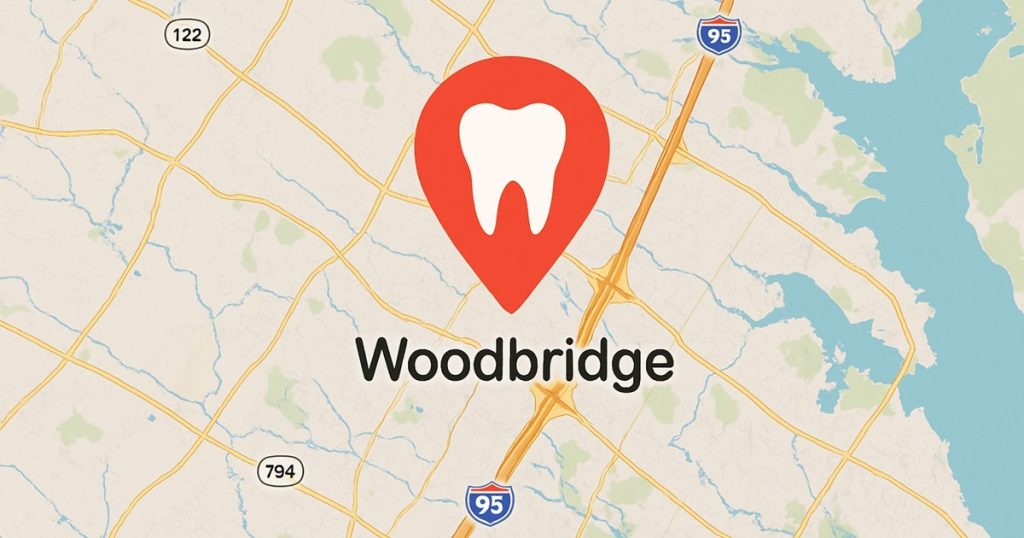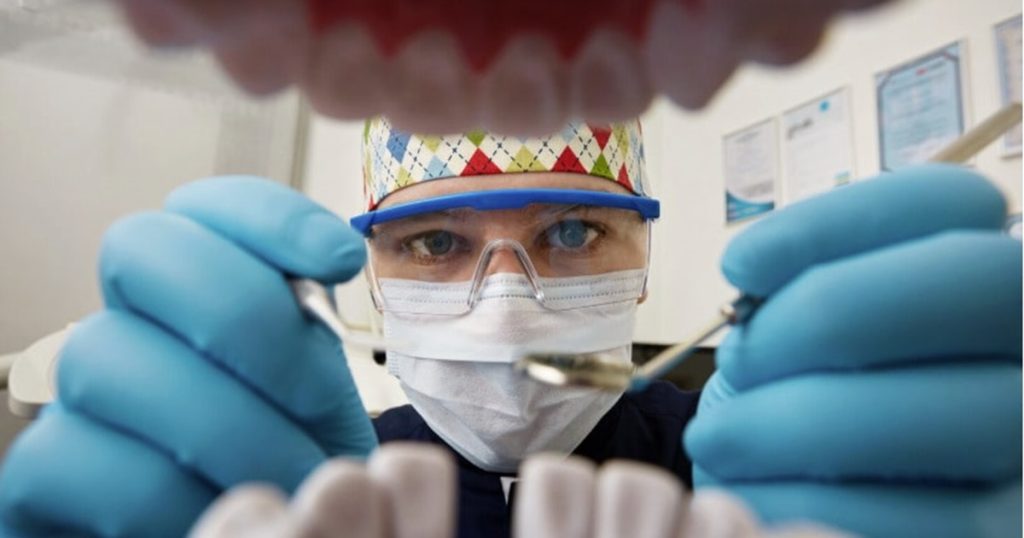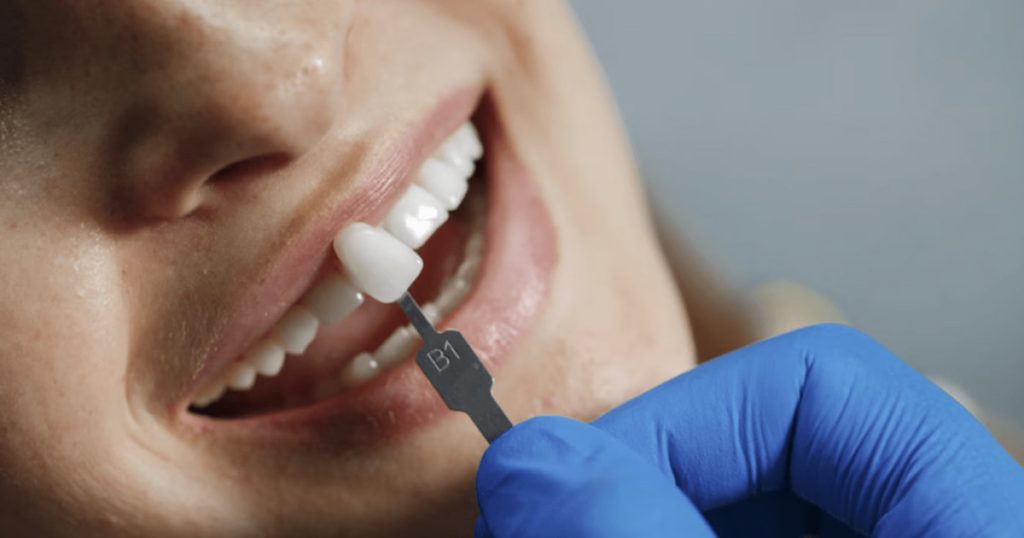Digital Smile Design (DSD) is a modern way to plan your new smile. It uses digital tools like photos and 3D scans to show you exactly what your smile will look like before any dental implants begin. This helps your dentist create a custom smile that perfectly fits your face, improving how precise and natural the results are. DSD is great for most people wanting a better smile, but if you have major dental problems, you’ll need to fix those first. Your dentist will also check to make sure it’s the right choice for you.
What Is Digital Smile Design (DSD)?
Imagine being able to see exactly how you’ll look after a dental treatment. Now, thanks to advancements in digital dentistry, a new method called Digital Smile Design, or DSD for short, you can. This method allows you to see your ideal smile before treatment even starts. Using pictures, videos, and digital scans of your face and teeth, a DSD is created using this technique. Because of this design, you and your dentist can make extremely precise choices regarding the position, color, and shape of your teeth.
DSD essentially functions as a comprehensive blueprint for your future smile, which serves as the basis for planning all treatment phases, from veneers or crowns to smile design correction. This means that the dentist works more precisely, and you both know ahead of time what the outcome will be.
How DSD Works in Dental Implant Planning
It all starts with intraoral scanners. Intraoral scanners are devices that take an accurate 3D image of your mouth, instead of creating an impression. The data is transferred to digital simulation software to create a new and improved smile for you, taking into account your facial structure, jaw, and preferences.
Once the model has been made (it is important to note that this is just a rough draft), 3D printers can create a physical model. This shows you what the implant will look like before any procedures take place. After the model is approved, the dentist will finish with porcelain veneers, zirconium veneers, or composite bonding, depending on the digital plan. Digital X-rays and CT scans are also taken to assess the position of the jaw and teeth for safe and proper implant placement.
Finally, upon assessing your mouth and teeth, facial and aesthetic analysis software is used to ensure that you will have a smile that is in harmony with the shape of your face and won’t compromise your natural appearance.
Benefits of Digital Smile Design for Dental Implants

There are 3 main benefits of this method:
1- See Your Future Smile Before Treatment Starts
The biggest advantage of DSD is that it lets you see the expected results in a digital format before dental implants begin. This means you can preview what your smile will look like and make confident, informed decisions. If you’re considering same-day dental implants, this method is especially helpful in ensuring everything is planned accurately from the start. The entire process becomes more precise and collaborative between you and your dentist.
2- Enhanced Precision and Accuracy
DSD assists in planning the placement of implants according to the jaw, bone, and other characteristics of the mouth. In the past, dentists had to guess where to make the placement of implants. Using digital scans, 3D software, and imaging, patients can receive the treatment with extraordinarily high precision. The higher precision limits the margin of error, reduces the time for the procedure, and garners overall patient satisfaction. So, it can be stated with confidence that DSD is relatively error-free and intends to achieve faultless outcomes that are not only beautiful but also precisely match the patient’s facial structure.
3- Improved Aesthetic Outcomes
This method helps create a smile that looks great and fits your face perfectly. Unlike older methods that focused only on the teeth, DSD also considers your face shape, lips, and how you smile. You get to see a digital preview of your new smile, give feedback, and make changes before treatment starts. This way, the final result not only looks natural and beautiful but also boosts your confidence because it’s designed just for you.
Ready to See Your Future Smile?
If you want a perfect smile without any guesswork, our team of experts will help you create a beautiful smile that’s completely unique to you.
Is Digital Smile Design Suitable for Everyone?

It is a great option for those who want a more attractive smile. But, it’s not suitable for everyone, and certain conditions must be met for the treatment to be successful:
- Oral health matters: People with serious issues like cavities, gum disease, or jaw problems need to treat these conditions before starting DSD.
- Tooth structure is important: Individuals with severe tooth loss or major tooth deformities may require additional or alternative treatments, such as dental implants for missing teeth, to achieve the best outcome.
- Specialist evaluation is essential: A dentist must assess each person’s oral health and needs to determine if DSD is right for them.
How Digital Smile Design Improves the Patient Experience
With traditional methods, the patient would not normally know what the treatment would look like once finished. With DSD, the patient gets to see a digital representation of their finished smile before the treatment begins, and so is also involved in the creation of their own smile from the very start. Knowing what changes will take place makes the individual feel more comfortable and confident. One patient shared how seeing her future smile on screen made her feel excited rather than nervous—she even asked for a few tweaks to better match her facial features. If the patient can contribute and make changes before the work commences, they will have a more personalized and rewarding experience. Whether you choose DSD or a smile makeover with crowns, the process ensures a more personalized and clear treatment journey.
Can Digital Smile Design Fail?
Yes, this method can sometimes change or fail over time, even though it’s meant to last. Here’s why your new smile might not look as good as it once did:
- New dental problems: Things like cavities, cracked teeth, or gum disease can affect the look of your smile design.
- Genetics: Sometimes, natural factors you inherit can play a role.
- Wear and tear: Putting too much force on your teeth (like grinding) can damage the design.
- Poor care: Not brushing and flossing properly (poor oral hygiene) or skipping your regular dental checkups can also lead to problems.
But don’t worry! You can make your DSD last much longer with good daily maintenance and by going to your dentist for regular checkups to support your overall oral health. Also, you should learn How Dental Implants Improve Oral Health.
How should I take care of myself after Digital Smile Design?

For the first few days, avoid foods or drinks that are extremities in temperature (too hot or cold and wait until sensitivity subsides. You should also avoid hard and/or sticky foods simply to avoid affecting the design. You may brush your teeth gently during this period to maintain gum health, but be careful not to apply excessive force.
Flossing every day is super important to clean between your teeth. Don’t forget your regular dental checkups either; your dentist will examine your smile design and overall dental health. If you notice any problems with the materials used in your design, or if anything about your smile unexpectedly changes, contact your dental professional right away.
Sum Up
Digital Smile Design (DSD) is a modern and powerful tool that lets you see your future smile before treatment begins. It helps you and your dentist make precise, personalized decisions to achieve natural, beautiful results with more confidence and comfort.
Looking for a long-lasting smile transformation? Learn more about All-on-4 implants in Woodbridge, which is a reliable solution for full-mouth restoration.
FAQ
What are the disadvantages of digital smile design?
It requires advanced equipment and an experienced dentist, as well as being less ubiquitous. It will often carry a higher price, and in some cases, the final result can vary a little from the digital image.
Is dental implant technology improving?
Yes! Procedures are more accurate and less painful than previously, and digital scanning and software make planning much more accurate. All of the advancements in technology have streamlined treatment and given us more predictability. According to the American Academy of Cosmetic Dentistry, digital tools like 3D imaging and smile design software have significantly improved the precision and outcome of cosmetic dental procedures.
Is digital smile design worth it?
For a good number of individuals, yes. Because DSD gives you a clear idea of your end smile before you even begin treatment. That degree of transparency and being able to contribute to your smile design may impart a sense of comfort and satisfaction with treatment.
What is the 50-40-30 rule for smile design?
The 50-40-30 rule in smile design is a guideline dentists use to create a balanced and natural-looking smile. Imagine the two front-most teeth as 100% of the width. Then, the teeth next to them (the middle ones) should be roughly 50% of that width, the teeth after those (the lateral ones) about 40%, and the pointy canine teeth about 30%. Of course, these numbers can be adjusted slightly to best fit your unique face and personal preferences.
What Do You Think About Digital Smile Design? Have questions or experiences to share? Drop a comment below. We’d love to hear your thoughts and help you feel more confident about your smile journey.







